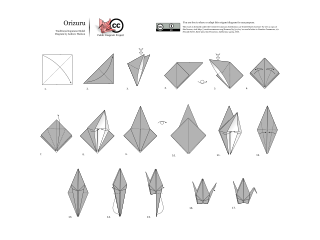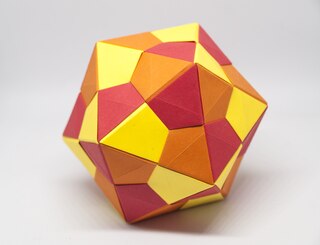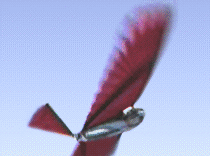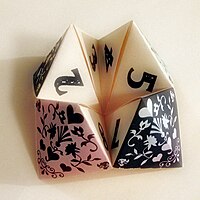
Origami is the Japanese art of paper folding. In modern usage, the word "origami" is often used as an inclusive term for all folding practices, regardless of their culture of origin. The goal is to transform a flat square sheet of paper into a finished sculpture through folding and sculpting techniques. Modern origami practitioners generally discourage the use of cuts, glue, or markings on the paper. Origami folders often use the Japanese word kirigami to refer to designs which use cuts.

The Yoshizawa–Randlett system is a diagramming system used to describe the folds of origami models. Many origami books begin with a description of basic origami techniques which are used to construct the models. There are also a number of standard bases which are commonly used as a first step in construction. Models are typically classified as requiring low, intermediate or high skill depending on the complexity of the techniques involved in the construction.

The discipline of origami or paper folding has received a considerable amount of mathematical study. Fields of interest include a given paper model's flat-foldability, and the use of paper folds to solve up-to cubic mathematical equations.

Modular origami or unit origami is a two-stage paper folding technique in which several, or sometimes many, sheets of paper are first folded into individual modules or units and then assembled into an integrated flat shape or three-dimensional structure, usually by inserting flaps into pockets created by the folding process. These insertions create tension or friction that holds the model together.

An ornithopter is an aircraft that flies by flapping its wings. Designers sought to imitate the flapping-wing flight of birds, bats, and insects. Though machines may differ in form, they are usually built on the same scale as flying animals. Larger, crewed ornithopters have also been built and some have been successful. Crewed ornithopters are generally either powered by engines or by the pilot.

Chinese paper folding, or zhezhi, is the art of paper folding that originated in medieval China.

In miniature wargaming, players enact simulated battles using scale models called miniature models, which can be anywhere from 2 to 54 mm in height, to represent warriors, vehicles, artillery, buildings, and terrain. These models are colloquially referred to as miniatures or minis.

A paper plane is a toy aircraft, usually a glider, made out of single folded sheet of paper or paperboard. A simple nose-heavy paper plane, thrown like a dart.

Paper craft is a collection of crafts using paper or card as the primary artistic medium for the creation of two or three-dimensional objects. Paper and card stock lend themselves to a wide range of techniques and can be folded, curved, bent, cut, glued, molded, stitched, or layered. Papermaking by hand is also a paper craft.

A fortune teller is a form of origami used in children's games. Parts of the fortune teller are labelled with colors or numbers that serve as options for a player to choose from, and on the inside are eight flaps, each concealing a message. The person operating the fortune teller manipulates the device based on the choices made by the player, and finally one of the hidden messages is revealed. These messages may purport to answer questions, or they may be activities that the player must perform.
Lillian Vorhaus Oppenheimer was an origami pioneer from New York City. Becoming a leading figure in the art form in her later years, Oppenheimer is credited with popularizing it in the United States. She adopted the Japanese word origami instead of the English paper folding, and the foreign term became established in the English language due to her efforts.
The Bug Wars were origami contests among members of the Origami Detectives which started when one member made a bug, a horned beetle with outspread wings, from a single sheet of paper: this design provoked other members to design more complex origami in the shape of bugs, such as wasps and praying mantises.

Origami paper is used to fold origami, the art of paper folding. The only real requirement of the folding medium is that it must be able to hold a crease, but should ideally also be thinner than regular paper for convenience when multiple folds over the same small paper area are required.
Jeremy Shafer is a professional entertainer and origamist based in Berkeley, California. He has been folding origami since he was ten. He creates his own origami designs which tend to be whimsical and unique, such as his "Man Swatter" and "BARF Bag". Shafer is sometimes billed as Jeremy the Juggler, and his stunts include folding a burning origami bird, riding a flaming unicycle, and juggling torches.

Kawasaki's theorem or Kawasaki–Justin theorem is a theorem in the mathematics of paper folding that describes the crease patterns with a single vertex that may be folded to form a flat figure. It states that the pattern is flat-foldable if and only if alternatingly adding and subtracting the angles of consecutive folds around the vertex gives an alternating sum of zero. Crease patterns with more than one vertex do not obey such a simple criterion, and are NP-hard to fold.

Rigid origami is a branch of origami which is concerned with folding structures using flat rigid sheets joined by hinges. That is, unlike in traditional origami, the panels of the paper cannot be bent during the folding process; they must remain flat at all times, and the paper only folded along its hinges. A rigid origami model would still be foldable if it was made from glass sheets with hinges in place of its crease lines.

The fold-and-cut theorem states that any shape with straight sides can be cut from a single (idealized) sheet of paper by folding it flat and making a single straight complete cut. Such shapes include polygons, which may be concave, shapes with holes, and collections of such shapes.

The orizuru, origami crane or paper crane, is a design that is considered to be the most classic of all Japanese origami. In Japanese culture, it is believed that its wings carry souls up to paradise, and it is a representation of the Japanese red-crowned crane, referred to as the "Honourable Lord Crane" in Japanese culture. It is often used as a ceremonial wrapper or restaurant table decoration. A thousand orizuru strung together is called senbazuru (千羽鶴), meaning "thousand cranes", and it is said that if someone folds a thousand cranes, they are granted one wish.
Developable mechanisms are a special class of mechanisms that can be placed on developable surfaces.
















